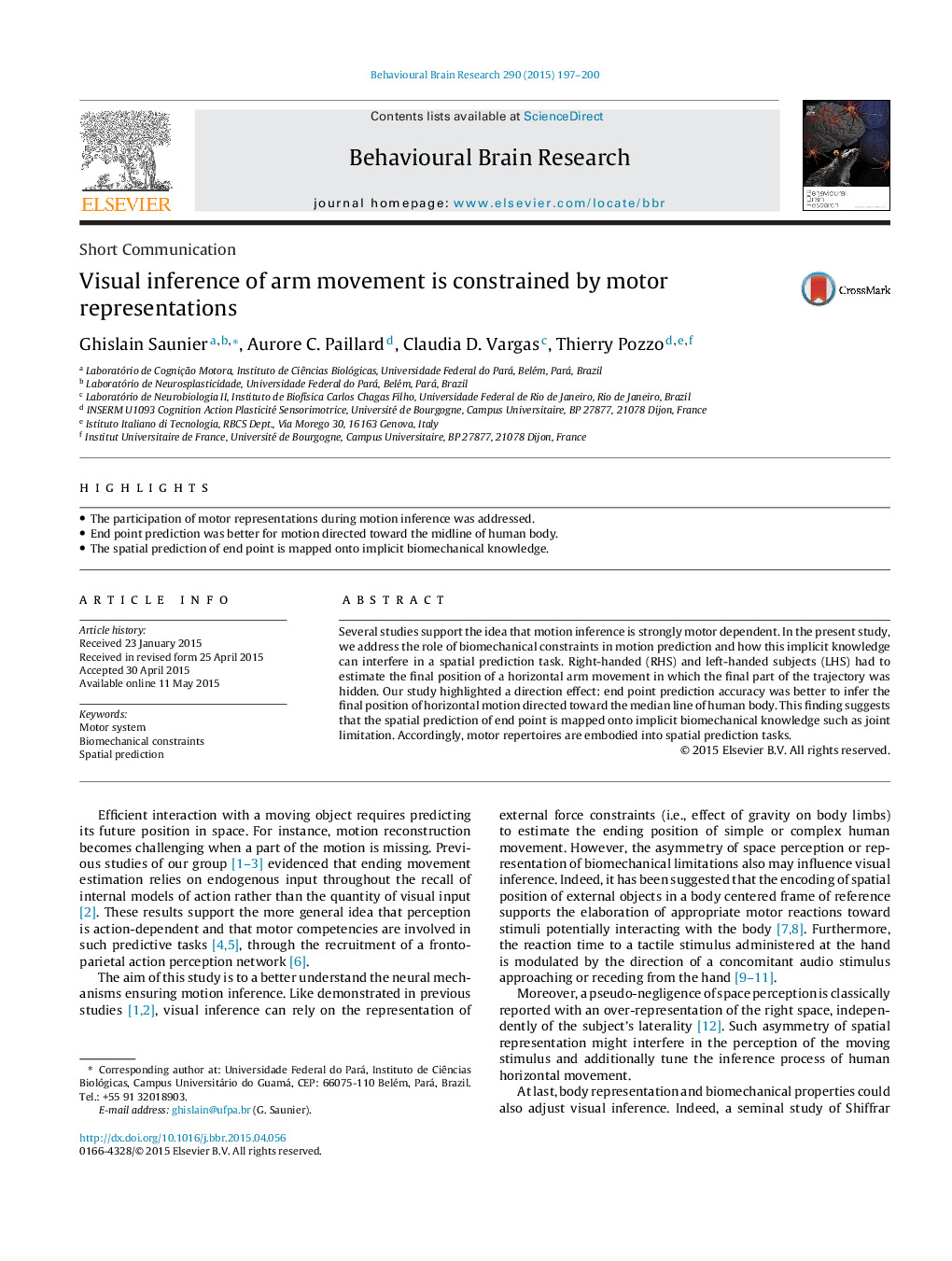| Article ID | Journal | Published Year | Pages | File Type |
|---|---|---|---|---|
| 6256693 | Behavioural Brain Research | 2015 | 4 Pages |
â¢The participation of motor representations during motion inference was addressed.â¢End point prediction was better for motion directed toward the midline of human body.â¢The spatial prediction of end point is mapped onto implicit biomechanical knowledge.
Several studies support the idea that motion inference is strongly motor dependent. In the present study, we address the role of biomechanical constraints in motion prediction and how this implicit knowledge can interfere in a spatial prediction task. Right-handed (RHS) and left-handed subjects (LHS) had to estimate the final position of a horizontal arm movement in which the final part of the trajectory was hidden. Our study highlighted a direction effect: end point prediction accuracy was better to infer the final position of horizontal motion directed toward the median line of human body. This finding suggests that the spatial prediction of end point is mapped onto implicit biomechanical knowledge such as joint limitation. Accordingly, motor repertoires are embodied into spatial prediction tasks.
